The RF-7 "Cutlass" is a lightweight, single-seat fighter aircraft designed by Roush Systems for the Wright Isles Air Defense Force.
Operational History
Born from a 1975 requirement for a light fighter capable of point-defending the Archipelago's challenging geography and infrastructure, the RF-7's first delivery was in 1979 and was present in all squadrons by 1981. From there, it served on patrol, interception, and even reconnaissance duties as the backbone of the WIADF's combat-ready wings. Its first air-to-air victory was recorded in 1983 against an undisclosed enemy aircraft. It achieved a cumulative combat record of 7K:2L by 2010, when it was being phased out in favor of faster, longer-range, and more advanced aircraft. Some RF-7s continue to be used today in reserve operations, as aggressors in exercises, and as advanced trainers. Modernization efforts are underway to potentially make the RF-7 an inexpensive export fighter. A total of 880 RF-7s were built between 1978-1996.

Features & Characteristics
The RF-7 is powered by a single, smaller modification of the Blasto J-90, an already versatile and familiar platform at the time; providing it with good thrust for its size but ultimately keeping the craft in the subsonic category. Its "delta-tail" configuration combines the lift of a delta wing with the additional handling qualities of elevators, which greatly opens its fighting capabilities.
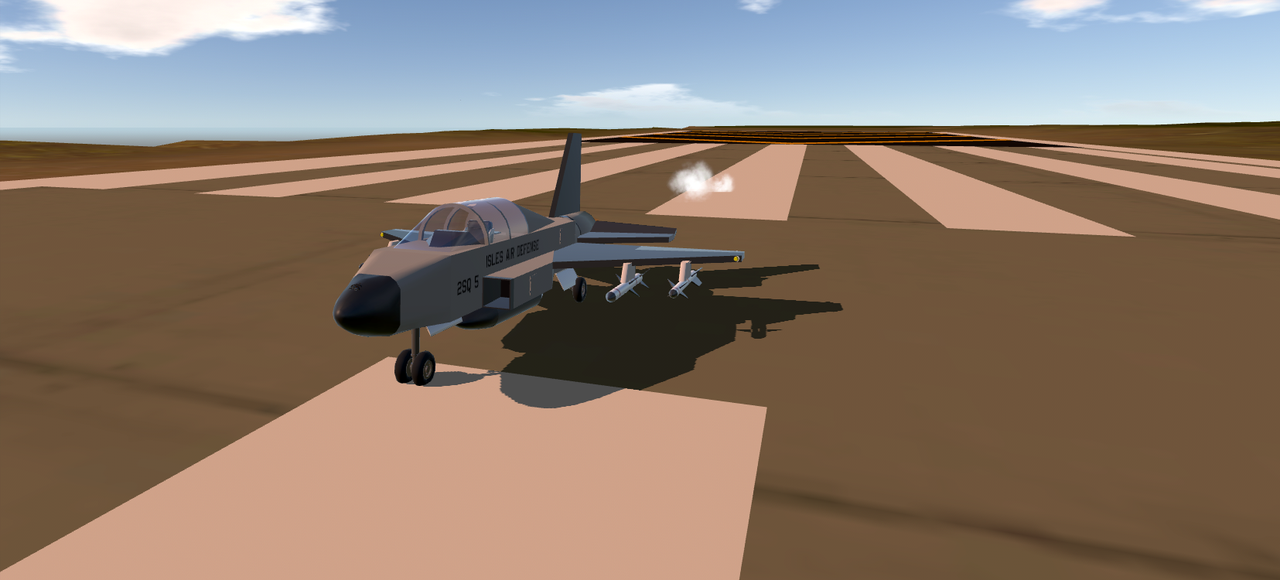
Its lightness aids in it being very maneuverable and sensitive to pilot inputs, being able to outturn most contemporary jet fighters in an energy fight. The RF-7 can take off from all developed runways and has a fairly modest takeoff & landing span. A toggleable gyroscope keeps the plane's attitude generally level during flight, assisting the in-game cruise feature.
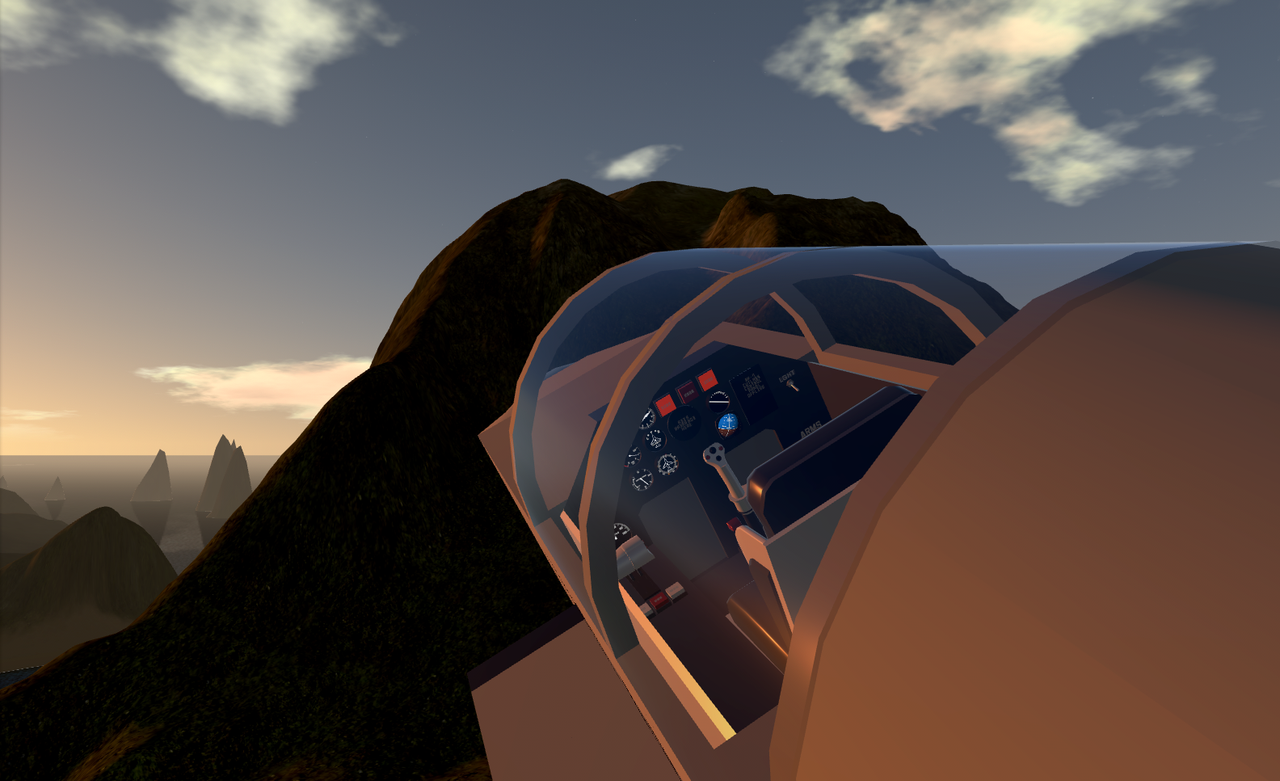
The RF-7 was modern for its time, coming not only with a radar interface, but with a digital computer to display finer points of aircraft systems. The cockpit is complete with all items necessary for flight and combat.
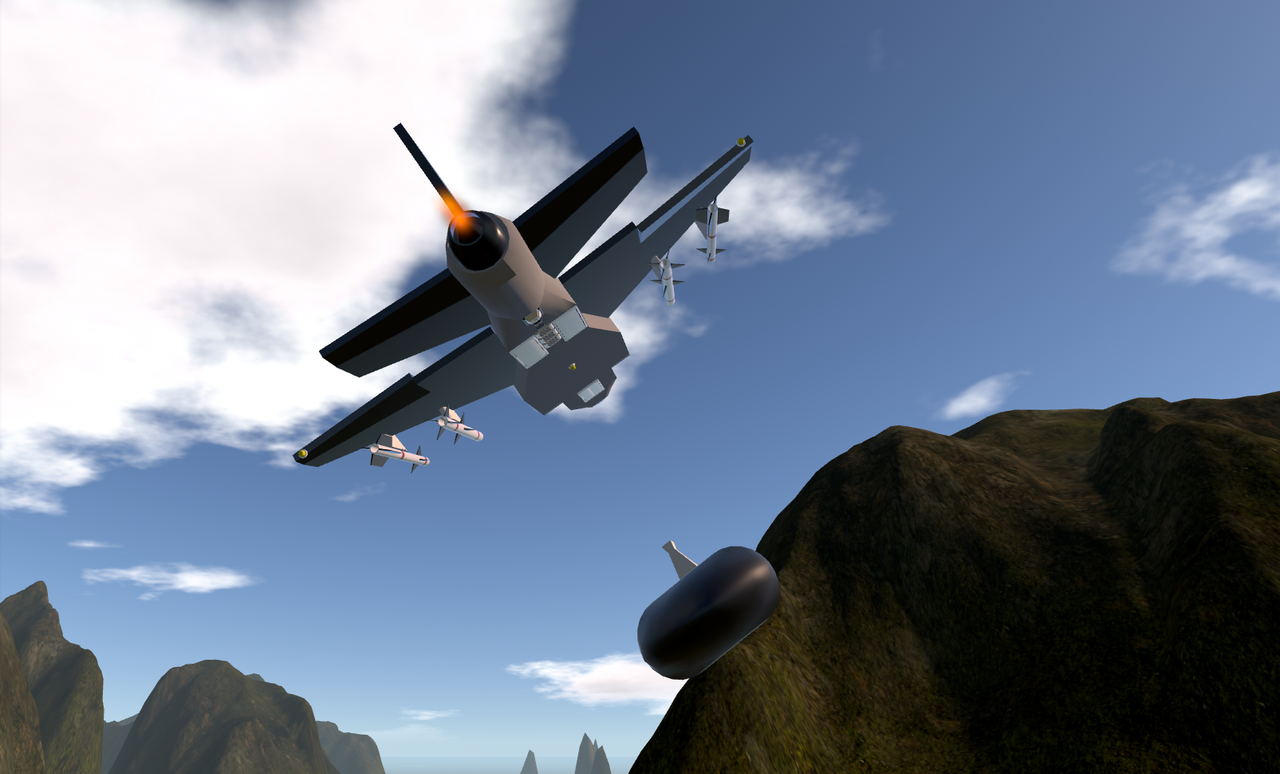
Unfortunately, a major drawback to the model was its limited range, which made long-ranged sorties logistically difficult to coordinate. For this reason, the Cutlass was frequently used with a streamlined, droppable fuel tank, which modestly extended its operating radius.
Featured Loadout:
-(2) AAM-1 "Interceptor" long-range missiles
-(2) AAM-2 "Guardian" dogfighting missiles
-(1) Malheur G-66 7.62x51mm rotary machine gun
-(1) UA8 "Teardrop" general-purpose drop tank

Thank you for reading and HAVE A SAFE FLIGHT!!
Specifications
Spotlights
- XM803ENJOYER46 3 months ago
- MetallicBeef6572 3 months ago
General Characteristics
- Created On Windows
- Wingspan 21.1ft (6.4m)
- Length 27.5ft (8.4m)
- Height 10.8ft (3.3m)
- Empty Weight 6,198lbs (2,811kg)
- Loaded Weight 9,185lbs (4,166kg)
Performance
- Power/Weight Ratio 1.358
- Wing Loading 65.0lbs/ft2 (317.4kg/m2)
- Wing Area 141.3ft2 (13.1m2)
- Drag Points 2337
Parts
- Number of Parts 99
- Control Surfaces 5
- Performance Cost 518

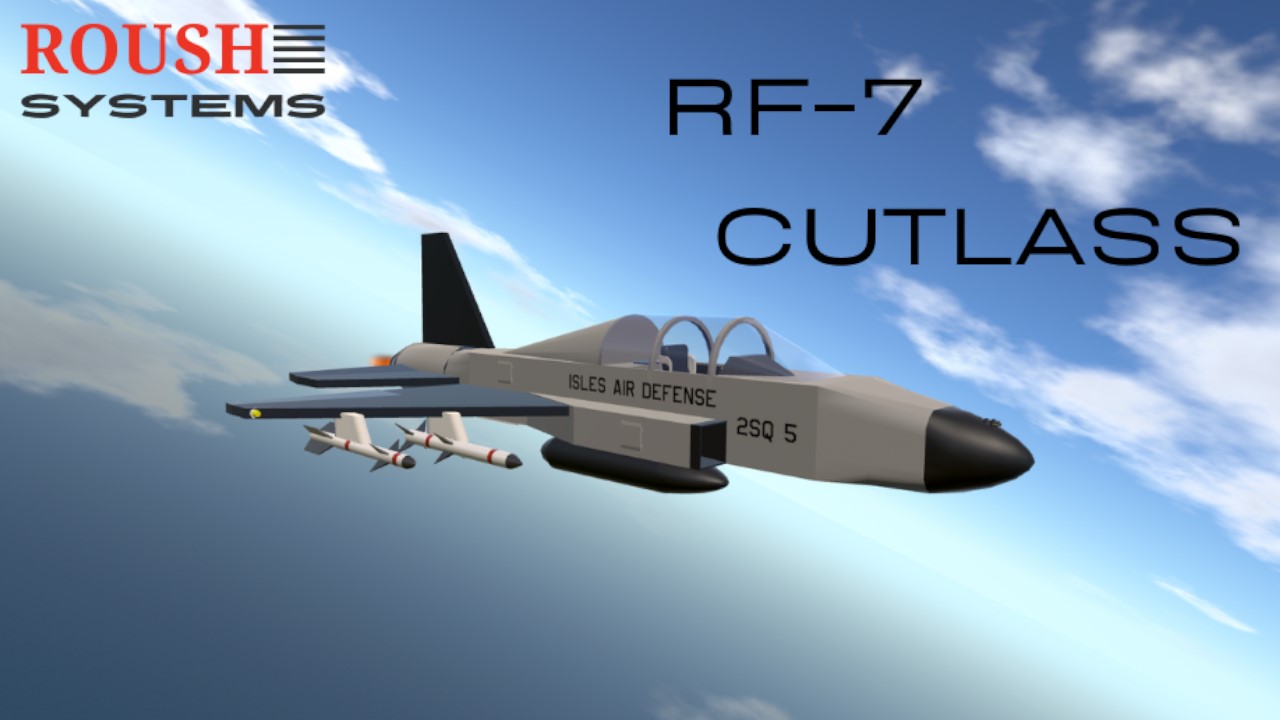
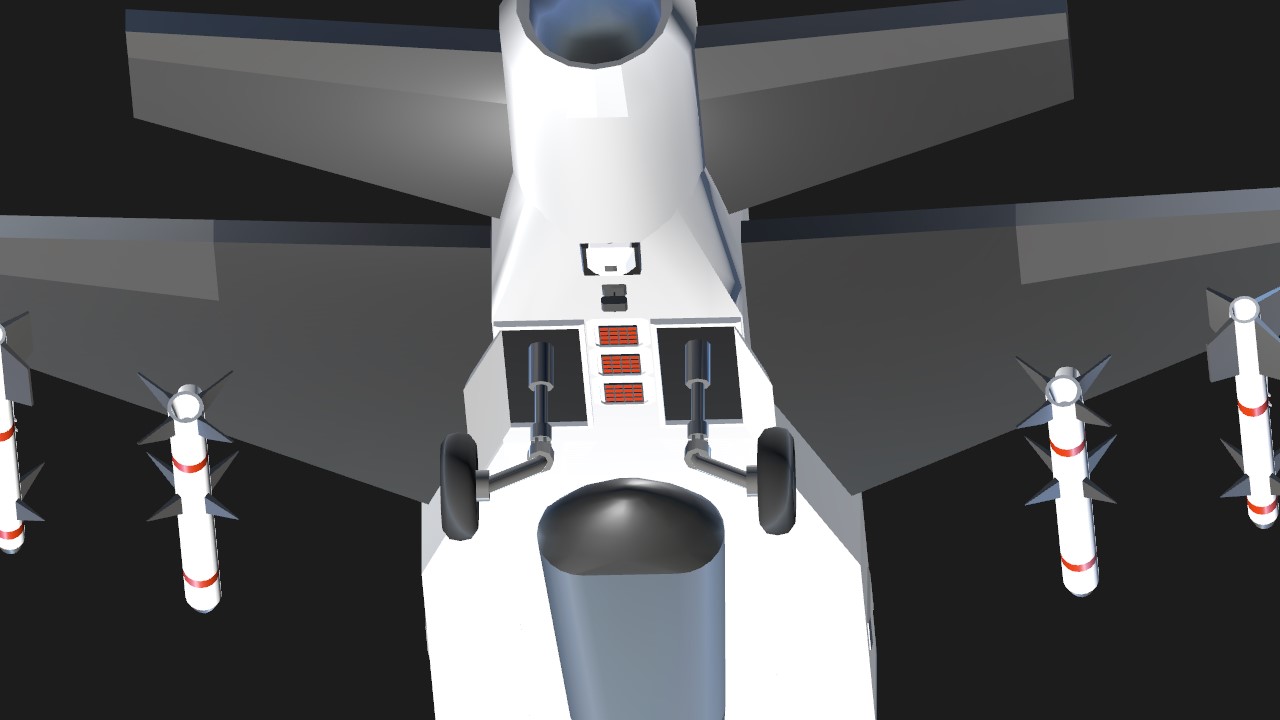
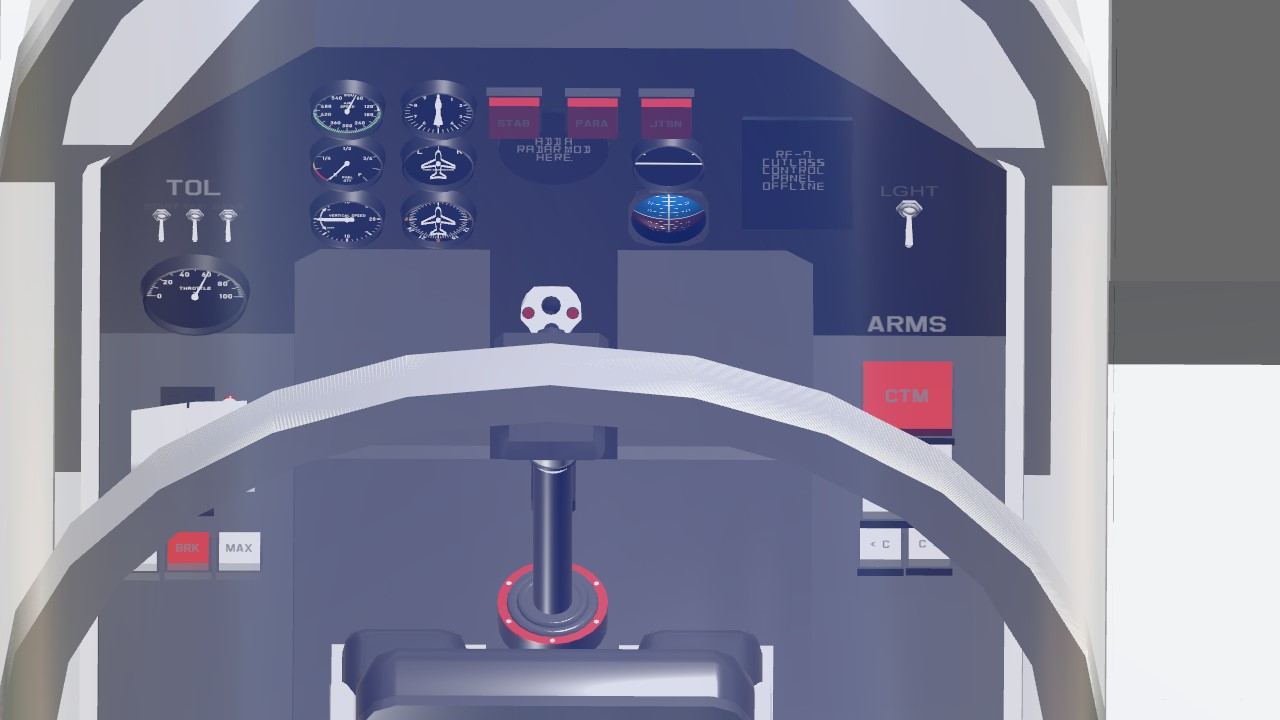
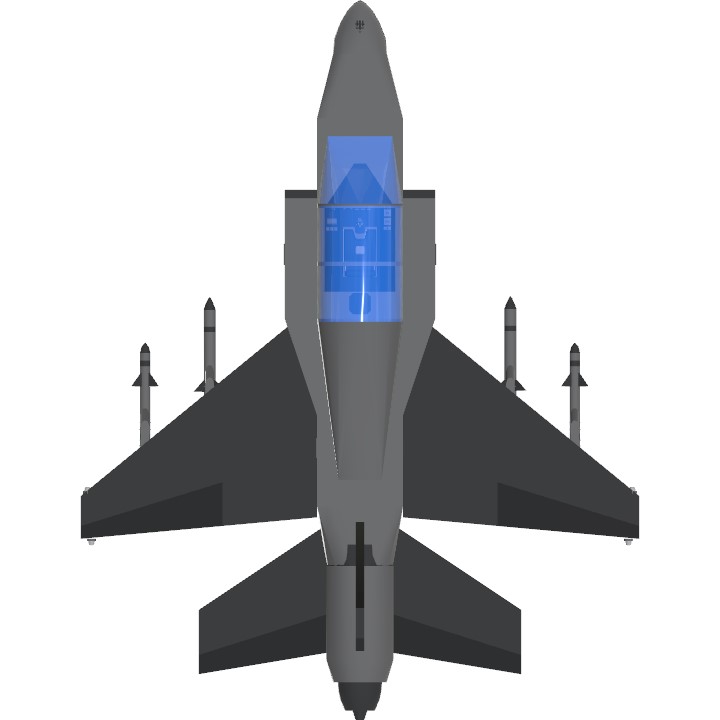
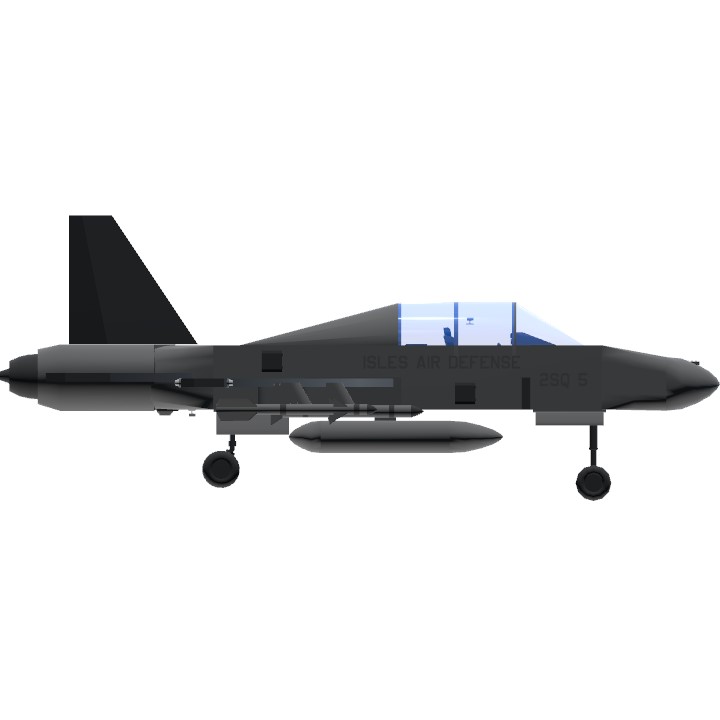
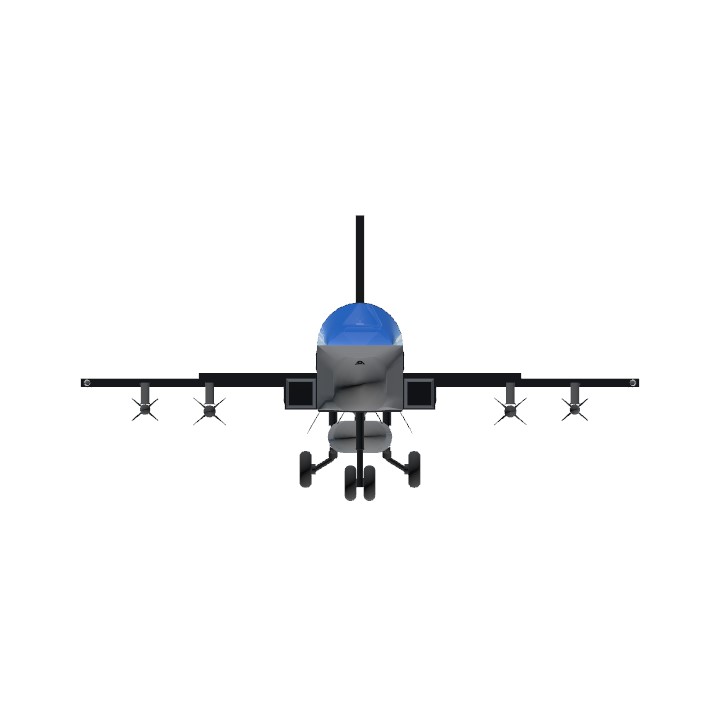
Nice bro, can’t download it rn but looks like a F5e had a baby with an F20
@RoushSystems Aight bet
@MetallicBeef6572 ok I'll lyk. Next will probably be some civilian/GenAv build
@RoushSystems Definitely bro, lets me justify pulling 30G turns lmao. I can help u out with ur next build if your interested
@MetallicBeef6572 If I do a newer-gen plane it will definitely be a lot smoother with the corners. Thanks about the lore, it helps me rationalize and make lots of design choices
This is ok, try to use the manual corner function on your fuselage pieces. But otherwise the lore is peak